
-
Find the right food for your petTake this quiz to see which food may be the best for your furry friend.Find the right food for your petTake this quiz to see which food may be the best for your furry friend.Featured products
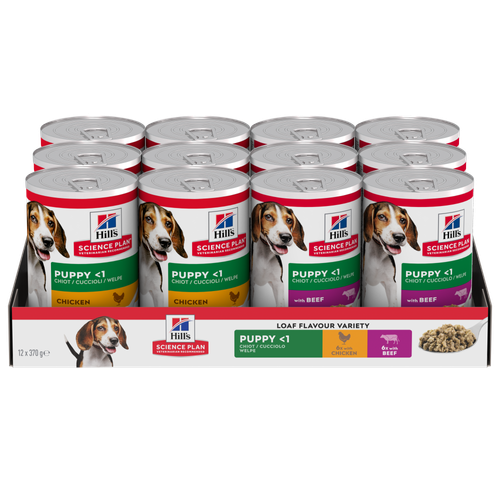 Puppy Food
Puppy FoodHill's Science Plan Puppy Multipack Wet Dog Food with Chicken & Beef are complete premium pet foods for growing puppies from weaning until 1 year old and for pregnant and nursing dogs. Your puppy will love these deliciously smooth and savoury minced loaves, formulated for balanced nutrition and overall health.
Shop Now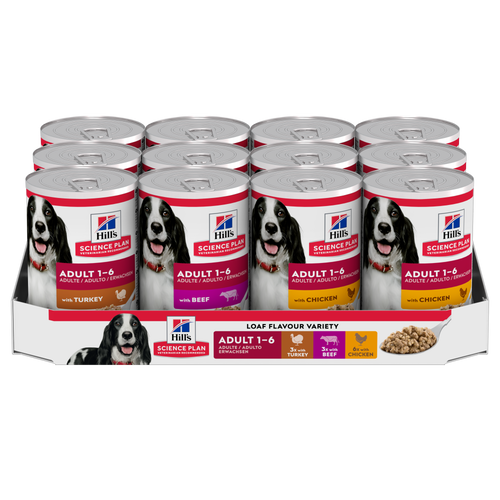 Adult Wet Dog Food with Beef
Adult Wet Dog Food with BeefHill's Science Plan Adult Multipack Wet Dog Food with Chicken, Beef & Turkey are complete premium pet foods for adult dogs from 1 year. Your dog will love these deliciously smooth and savoury minced loaves, formulated for balanced nutrition and overall health.
Shop Now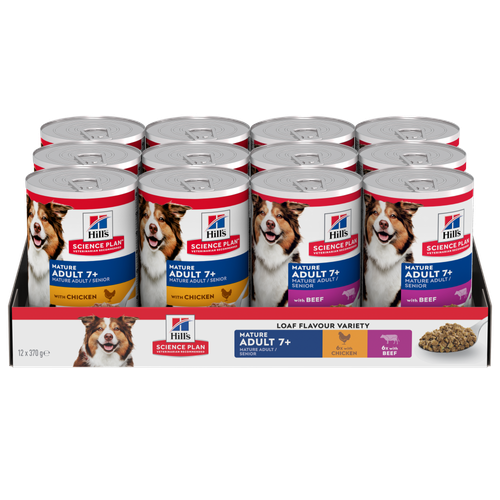 Mature Adult Dog Food
Mature Adult Dog FoodHill's Science Plan Mature Adult Multipack Wet Dog Food with Chicken & Beef are complete premium pet foods for mature adult dogs from 7 years. Your dog will love these deliciously smooth and savoury minced loaves, formulated to deliver the appropriate amount of energy to support the needs of adult dogs.
Shop NowFeatured products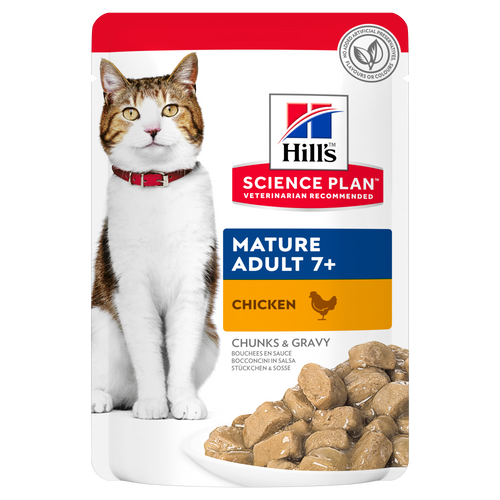 Mature Adult Wet Cat Food with Chicken
Mature Adult Wet Cat Food with Chicken
Tender chicken chunks in gravy for mature adult cats. Made with easy-to-digest ingredients, high-quality protein for lean muscle maintenance and antioxidant vitamins C+E for optimal health.
Shop Now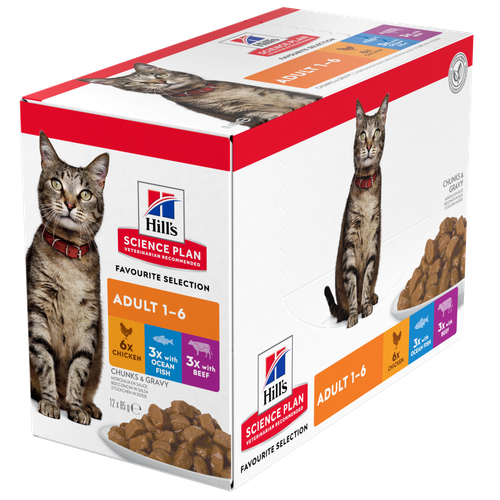 Adult Multipack Wet Cat Food with Beef, Ocean Fish & Chicken
Adult Multipack Wet Cat Food with Beef, Ocean Fish & ChickenTender chunks in gravy for cats, with high-quality protein to maintain lean muscle. With vitamin E and omega-3s & -6s for healthy skin and balanced minerals to support healthy vital organs.
Shop Now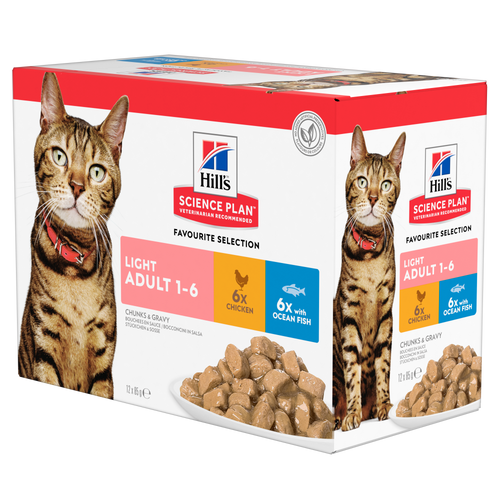 Light Adult Multipack Wet Cat Food with Chicken & Ocean Fish
Light Adult Multipack Wet Cat Food with Chicken & Ocean FishTender chicken chunks in gravy for cats, with L-carnitine and fewer calories for ideal weight management. Packed with high-quality protein, omega-6s, and vitamin E for shiny fur and healthy skin.
Shop Now -
Dog
- Dog Tips & Articles
-
Health Category
- Weight
- Food & Environmental Sensitivities
- Urinary
- Digestive
- Joint
- Kidney
-
Life Stage
- Puppy Nutrition
- Adult Nutrition
- Senior Nutrition
Cat- Cat Tips & Articles
-
Health Category
- Weight
- Skin & Food Sensitivities
- Urinary
- Digestive
- Kidney
-
Life Stage
- Kitten Nutrition
- Adult Nutrition
Featured articles Show some love with wet foods: a great choice for pets with health issues
Show some love with wet foods: a great choice for pets with health issuesShow some love with wet foods: a great choice for pets with health issues.
Read More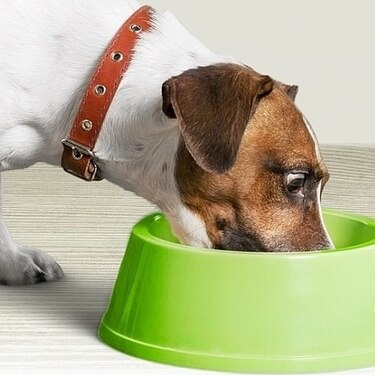 The Right Diet For Your Pet
The Right Diet For Your PetIn people, the right diet is very important. If you are eating the wrong way for your metabolism, activity level, age and lifestyle you could end up with health issues.
Read More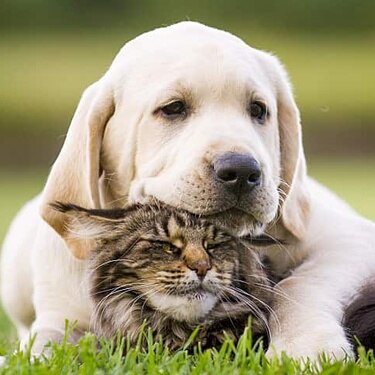 The Incredible Science Behind Your Pet's Microbiome
The Incredible Science Behind Your Pet's MicrobiomeLearn what your pet's microbiome is, how it contributes to your pet's gut and overall health, and why nutrition is important in maintaining healthy microbiomes.
Read More -


Owning a dog can be one of life’s great pleasures and people acquire dogs from young, fresh-faced puppies to adopted golden oldies ready to see out their last years in a loving home. Whatever the age of the dog you have, nutrition is one of the most important things to know about and to get right. Good nutrition creates healthy bones and muscles but it can also make a difference to brain and organ development and even affect training capabilities.
All animals and humans go through what we call different lifestages. As our dogs grow and develop and then start to age, their nutritional requirements change. It’s important as pet parents that we recognise these life stages and change their food accordingly to keep them slim, healthy and in great shape. A lifestage dog food will grow with your dog, so it's important that you understand what your furry family member needs from their puppy to senior years.
What are dog nutritional requirements?
Dogs love to play with their owners and explore, but they need energy to do so. Nutrients are substances that are obtained from food and used as a source of energy and for vital bodily functions. They’re essential for an animal's growth, and can be considered maintenance tools to keep your dog in optimum health. Just as your car requires fuel (and other types of maintenance) to run, your dog needs food to keep them going too.
There are different classes of nutrients that your dog needs in their diet: proteins, fats, carbohydrates, vitamins, minerals, and water. Choosing a complete and balanced food that includes those nutrients will help young dogs grow and older dogs stay healthy. The lifestages of dogs are roughly divided into;
Puppies - newborn puppies (0-8 weeks)
Small/medium breeds 2-12 months, large/giant breeds 2-12/18 months
Adult dogs
Small/medium breeds 1-6 years, large/giant breeds 12/18 months to 5 years
Mature dogs
Small/medium breeds 7-10 years, large/giant breeds 6-8 years
Senior dogs
Small/medium breeds 11+ years, large/giant breeds 9+
Newborn puppies
When dogs are first born and for the next several weeks, their complete nutrition comes from their mother's milk. This is also important for their immune systems because antibodies from the mother should protect the puppies too. However, if the mother is ill or the puppies are orphaned, a commercial milk replacement will need to be given to the young puppies. Your veterinarian can educate you on how to choose a replacement, as well as how to feed newborn puppies who do not get milk from their mother.
Eventually, they'll begin to naturally wean from their mother's milk and begin to digest solids. During lactation the puppies’ mother should be fed ad lib puppy food to help supply all the calories and nourishment she needs to maintain her and her puppies. This can be wet or dry as long as it’s complete and balanced. As the puppies grow they will naturally start to explore the food and mimic their mother. If the mum is on dry food, soaking it prior to feeding will help the puppies when their teeth are very tiny. As the puppies grow they will start to eat more and more solid food and take less milk. Mum will soon get fed up with them too and start to take herself away for longer periods of time. Usually by around 8-9 weeks most puppies should be weaned and ready to go to their new homes.
Puppies (2-12 months)
Once puppies are weaned, they'll get all of their nutrition from dog food, so be sure to choose something that's not only tasty but healthy too. Growth and development is hard work and puppies require and use a lot of energy, so young dog nutritional requirements include increased protein, higher calorie density and certain other nutrients such as fatty acids and calcium to support healthy growth and organ development. Puppies’ stomachs are relatively tiny so they need several small meals a day. Your vet can give you guidance on the number of meals for their age. Some people drop to two meals for adulthood but there is no reason they can’t have more as long as their ration is split and they stay slim.
Dogs come in a huge range of sizes these days and not all dogs are the same when it comes to nutrition. Large breeds are generally those that are likely to be over 25 kg as an adult. These dogs need to grow more slowly than small breed dogs to keep their joints and bones healthy. Always make sure you choose a large breed puppy food for these dogs. Ask your vet if you’re not sure.
Expect puppies to play with their food at first. While eating may start as a game, young dogs will enjoy the taste and look forward to the flavours and sensations of chewing. As we said, at the outset, it may help to slightly moisten dry food to get your dog comfortable chewing.
It’s very important to have regular weight checks throughout life but especially from birth to adulthood. This helps make sure that your puppy is growing properly and not too quickly. Growth charts are really useful for this. It's also important to have regular weight and body condition checks with your vet to make sure your puppy stays slim. Slim puppies tend to become slim adults and vice versa so keeping them lean is great for lifelong good health.


Tasty Tips
Adult dogs (1-6 years)
Most small and medium sized dogs reach their adult life stage around their first year. At this stage of life, dogs require nutrition for maintenance, so it’s important to transition to an adult dog food at that time. Very large and giant breeds may take up to 18-24 months of age to be skeletally mature so ask your vet about when is the right time to switch from puppy to adult food.
An adult dog's food is based on size and activity level, so an extremely active pet would have different nutritional needs from a less active lap dog. Imagine the difference in the calories needed between someone who sits at a desk all day and a marathon runner!
If you have any questions as to how much you should be feeding your dog, it's best to check with your vet, but never overfeed your furry friend.
Once you've chosen the type of food that's the best fit for your dog, remember that other elements, such as temperature, will influence changes in your dog's diet. Extreme heat and cold will burn more of your dog's energy, and they’ll need to make up for that in their diet. Also, an activity change, such as starting an exercise regimen, will change the amount or type of food you offer your pet.
Because adult dogs don't need the same nutrients to help them grow that puppies do, the best dog food for your adult dog is one that is specially formulated for their adult needs. Continuing to feed your adult dog puppy food once they’ve reached their full size can lead to weight issues, as puppy food tends to be rich in growth-based nutrients and too calorific for many adult dogs.
Mature dogs (7-10 years)
Again, this lifestage varies with breed. In general, the bigger the dog, the shorter the lifespan. So a great Dane might be considered senior at the age of 7, whereas a 15 kg crossbreed would be considered only just mature. Seek advice about your individual dog’s lifestage from your vet.
This lifestage is often overlooked. While your dog still has lots of life in them and probably doesn't have problems playing and exercising with you, you may notice that they’re starting to slow down a little and their play sessions aren't as long as they used to be. Dogs are no different than humans in this regard. Just as we slow down with age, so do they, so it’s vital to feed them foods that meet their mature adult needs. Because your dog has slowed down at this stage of their life, they need more nutrients devoted to healthy organ, bone and muscle maintenance. A food formulated for their needs at this age will keep them feeling young and active.
With increasing years, calorie requirements go down in general. Many humans notice that they hit 40 and suddenly everything seems to result in weight gain! It’s the same for mature dogs. Foods aimed at this lifestage are usually lower calorie but higher fibre so your dog still feels full and satisfied. Again, those regular weight checks are really important. Not only so that you can adjust their ration but so that you can spot early signs of problems such as obesity. Weight loss is also important to spot on these checks. Weight loss can be the very first subtle sign of lots of older dog conditions so spotting it early can actually be a lifesaver.
Senior dogs (10+ years)
A dog will reach their senior years typically around age 10, but again it can differ between size and breed of dog. Every dog differs, so be sure to ask at your dog's annual checkup if they have reached or are approaching their senior years.
As your dog ages, their nutrition needs will change with their bodies. For example, metabolism often slows down significantly, so many senior dogs, like mature dogs, don't need food that is rich in calories. A senior dog food will take this into account and will be specially formulated to help maintain your dog’s normal body functions and mobility. Some senior dogs may struggle to keep weight on. Sometimes this is because they are simply losing fat weight but often it is because they are losing muscle mass. This is a condition called sarcopenia that comes with age, much the same as in humans. Losing lean muscle mass can be problematic because your pet may become weaker and get into a vicious circle of muscle loss and weakness. Your vet may do different measurements to tell if your dog is losing fat or muscle mass and then be able to recommend exactly the right food for your individual dog.
It’s in the later mature and senior lifestages that dogs may start to get age-related conditions such as joint disease or organ issues such as heart or kidney issues. Senior dogs may also experience brain-ageing, just like humans do. There are many therapeutic diets with specially-altered nutrient profiles that can make a huge difference to your dog’s quality and length of life. Ask your vet about these options if you feel your dog may benefit.
Choosing dog food for each stage of life
Deciding on what to feed your dog shouldn't be a difficult choice. If you need help to decide between the many choices available to you, first narrow down the options to your dog's age group. Next, consult your vet for any individual nutritional considerations for your dog. The vet will consider your dog's breed, size, health and energy output to help you make the right choice.
When you love your dog so much, it's easy to want to spoil them with treats and snacks. Just remember to share healthy dog treats when training your dog. Dog treats shouldn't make up more than ten percent of your dog's diet. And don't forget to keep fresh, clean water available to your dog at all times.


Erin Ollila believes in the power of words and how a message can inform—and even transform—its intended audience. Her writing can be found all over the internet and in print, and includes interviews, ghostwriting, blog posts, and creative nonfiction. Erin is a geek for SEO and all things social media. She graduated from Fairfield University with an M.F.A. in Creative Writing. Reach out to her on Twitter @ReinventingErin or learn more about her at http://erinollila.com.
Related products

Hill's Science Plan Adult Multipack Wet Dog Food with Chicken, Beef & Turkey are complete premium pet foods for adult dogs from 1 year. Your dog will love these deliciously smooth and savoury minced loaves, formulated for balanced nutrition and overall health.
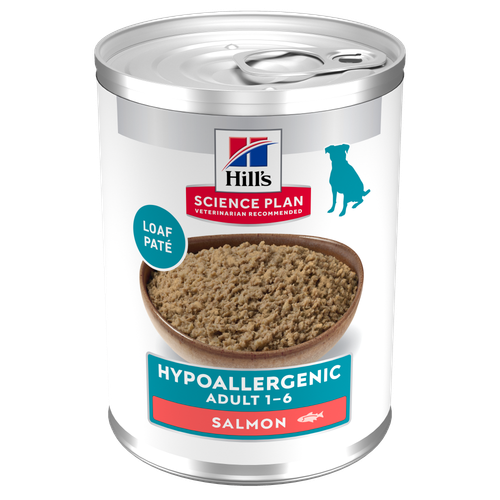
Hill's Science Plan Hypoallergenic Adult Wet Dog Food with Salmon is a complete premium pet food for all adult dogs from 1 year. This savoury tinned loaf is specially formulated for dogs with delicate skin and stomachs. It features a single novel animal protein source and is grain-free.

Hill's Science Plan Puppy Multipack Wet Dog Food with Chicken & Beef are complete premium pet foods for growing puppies from weaning until 1 year old and for pregnant and nursing dogs. Your puppy will love these deliciously smooth and savoury minced loaves, formulated for balanced nutrition and overall health.

Hill's Science Plan Mature Adult Multipack Wet Dog Food with Chicken & Beef are complete premium pet foods for mature adult dogs from 7 years. Your dog will love these deliciously smooth and savoury minced loaves, formulated to deliver the appropriate amount of energy to support the needs of adult dogs.
Related articles
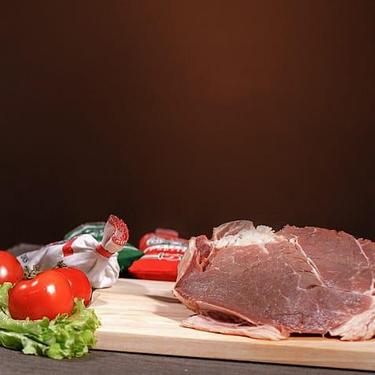
Learn about the potential health risks of a raw diet for dogs and why they aren't the best option for your pup or you.
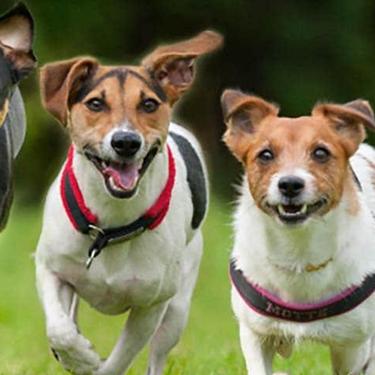
Learn effective tips for feeding a dog that's a picky eater and ensure proper nutrition for a finicky eater. Discover tips for pet parents at Hill's Pet UK.
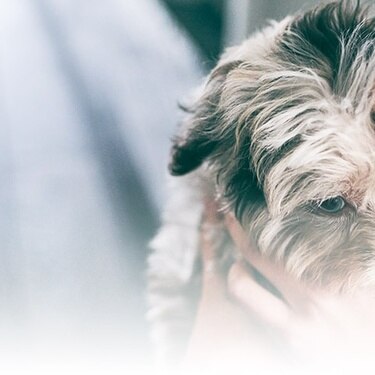
How, when and what to feed your new puppy is an important decision, learn more about the things to consider for feeding your puppy.

Many human foods are dangerous to dogs. Read about 5 of the worst toxic food offenders that can kill your dog - and how much it takes to hurt them.

Put your dog on a diet without them knowing
Our low calorie formula helps you control your dog's weight. It's packed with high-quality protein for building lean muscles, and made with purposeful ingredients for a flavourful, nutritious meal. Clinically proven antioxidants, Vitamin C+E, help promote a healthy immune system.
Put your dog on a diet without them knowing
Our low calorie formula helps you control your dog's weight. It's packed with high-quality protein for building lean muscles, and made with purposeful ingredients for a flavourful, nutritious meal. Clinically proven antioxidants, Vitamin C+E, help promote a healthy immune system.


